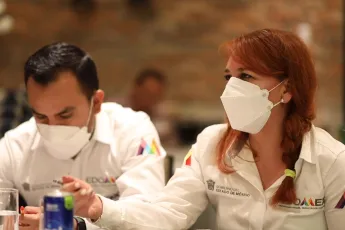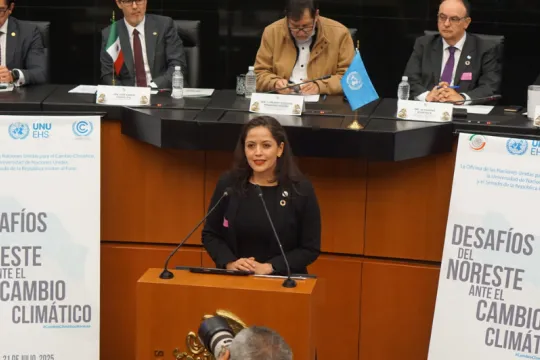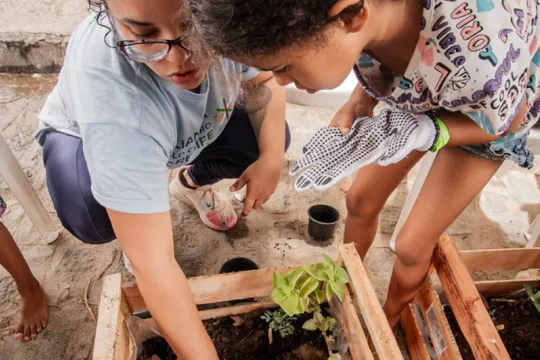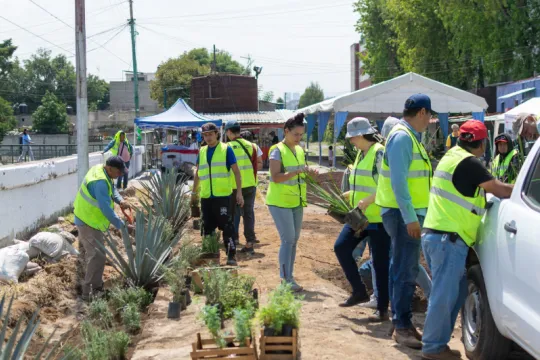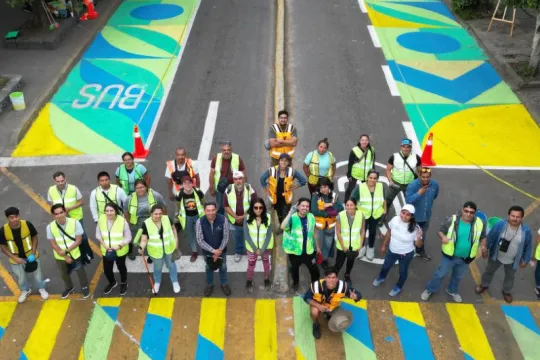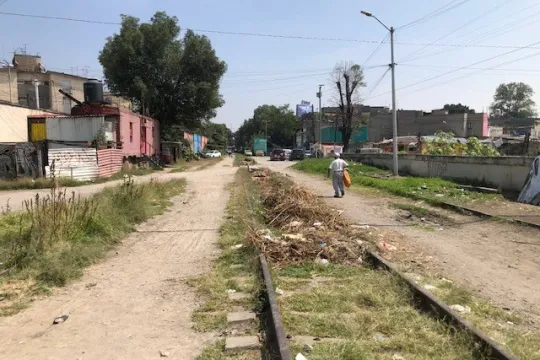Being the most industrialized municipality of Mexico state, the work in Naucalpan aims to transform the industrial area surrounding the polluted Hondo River through an urban regeneration project that addresses both climate change and inequality concerning neighbouring residents.
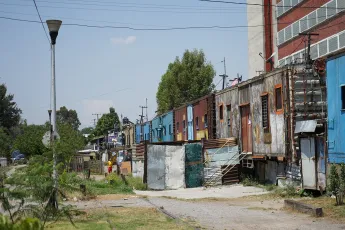
Informal settlements next to the Hondo river in Naucalpan, Mexico, on 20 April 2022. © Arianna Flores Corral / UNU-EHS
Naucalpan, Mexico
Naucalpan de Juárez, one of the 60 municipalities that together with Mexico City form the Metropolitan Area of the Valley of Mexico, is considered an economic engine at state and federal levels. It is recognized for providing the highest contribution to Mexico State’s GDP.
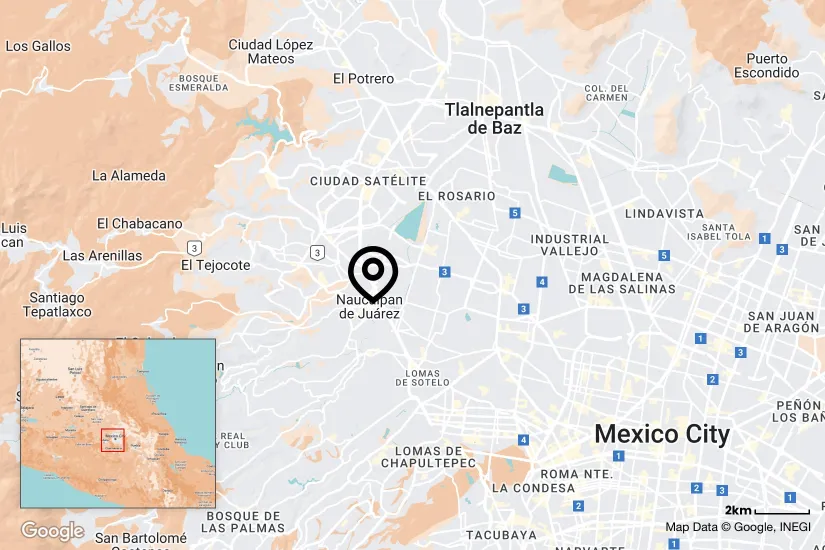
Its urbanization is linked to the mid-twentieth century industrialization process in the region, as well as to the migration of middle-class families moving from Mexico City and industrial workers looking for housing near their employment area. As the state was unable to fulfill dwelling needs, some settlements were built in the hills, close to abandoned railroad tracks, or near the river banks.
Naucalpan has a privileged location within the area due to its proximity to Mexico City. It accommodates regional urban facilities and large industrial parks. However, deindustrialization processes have occurred, leaving well-located land vacant or underutilized, causing rises in both speculation and urban development pressures.
Naucalpan has a temperate climate with rains in the summer. Among the city’s biggest climate risks are flooding, heat islands and subsidence, next to water pollution and decreased water availability for domestic and industrial use. Naucalpan does have regulatory instruments to deal with climate change.
Context & Background
The Urban Lab participants in Naucalpan agreed to focus on an area that includes industrial neighbourhoods with vacant and underutilized land, yet it is situated in ‘downtown’ Naucalpan. It accommodates commercial and residential areas along with urban facilities. The area is divided by two major axes: the heavily polluted Hondo river and the “Periférico”, the main highway connecting both ends of the metropolitan area of Mexico City. Some dwellings are built on the flood-prone riverbanks, and the highway crosses Naucalpan with twelve lanes and a four-lane flyover. The area is highly car-oriented with hostile walking and cycling conditions. Public transit takes place in small vans that increase the load of motorized traffic, as well as noise and air pollution.
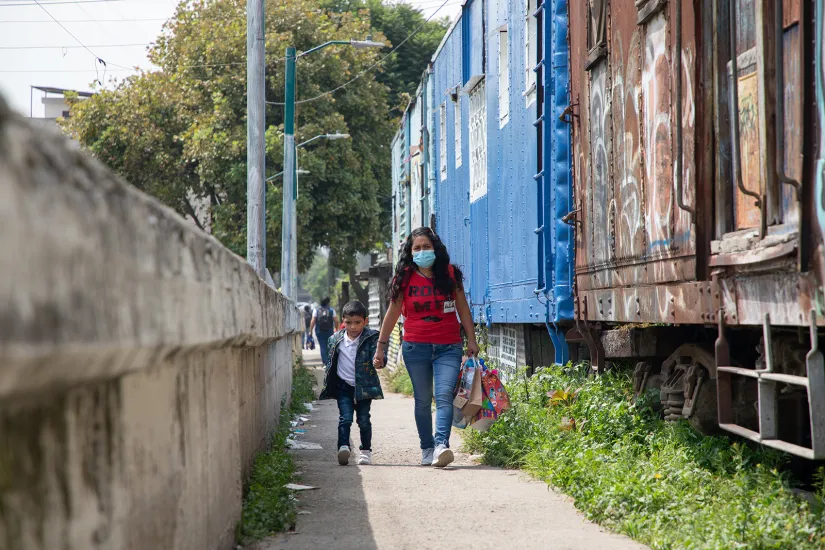
A woman and child walk along a path where abandonded train wagons have been transformed into informal houses, 20 April 2022. © Arianna Flores Corral / UNU-EHS
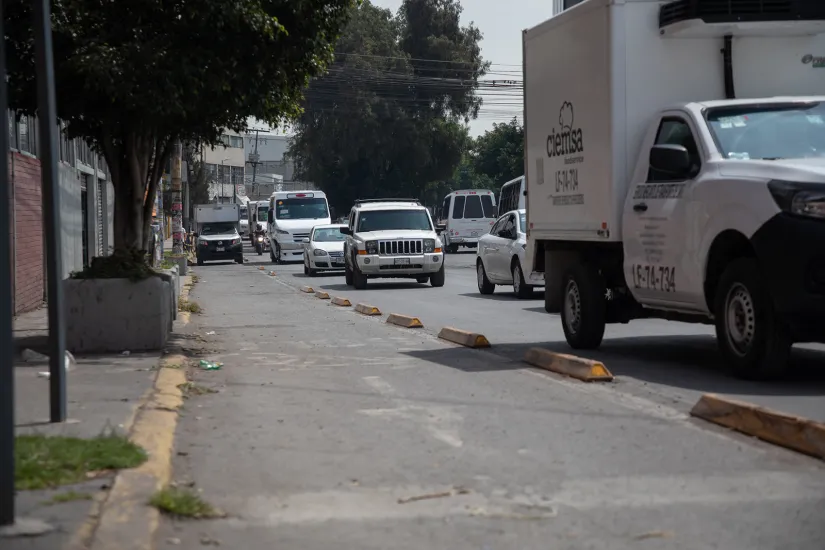
Traffic in a multi-lane street in Naucalpan, on 20 April 2022. © Arianna Flores Corral / UNU-EHS
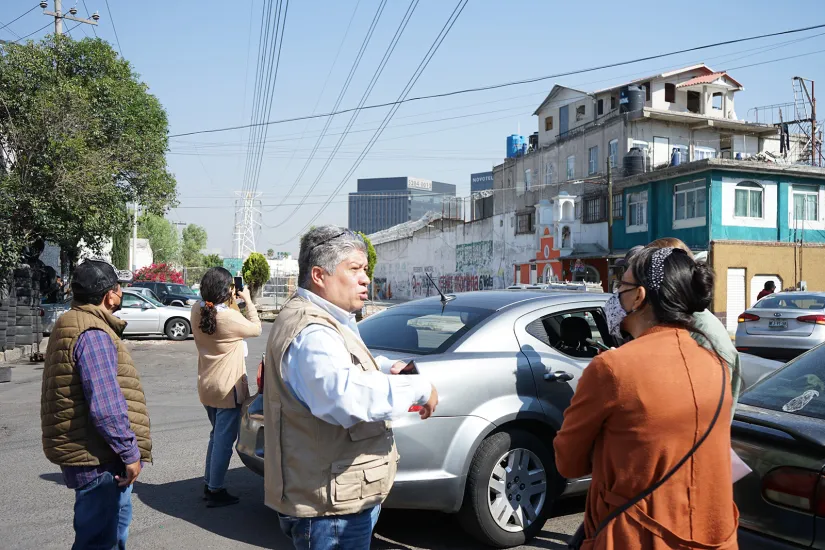
Consortium partners visit Naucalpan together with municipal government representatives, on 20 April 2022. © Arianna Flores Corral / UNU-EHS
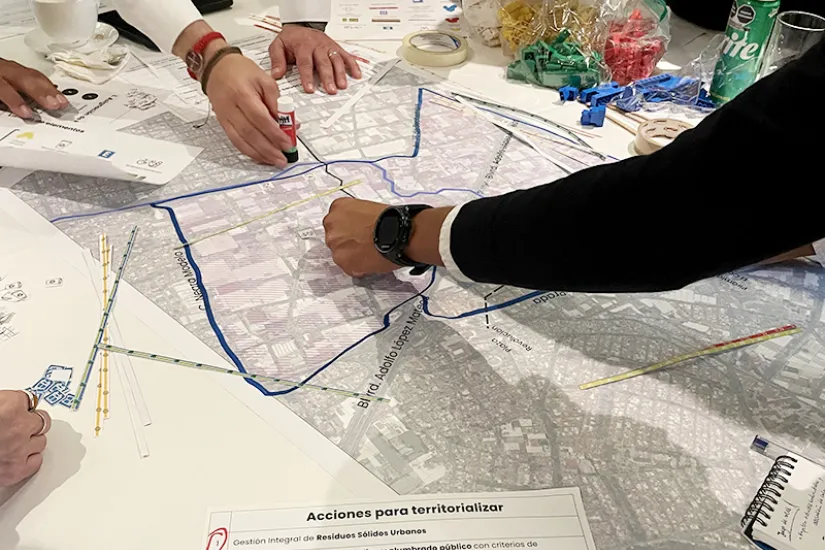
Participants are working together during a Naucalpan Urban Lab workshop, April 2022. © WRI Mexico
The Urban Lab
In Naucalpan, stakeholders from different sectors of society, including government authorities, civil society organizations, academia and the commercial sector, have been involved since the Urban Lab was created in late April 2022.
This collaboration agreement commits the parties to a joint vision to promote decarbonization, reduce emissions, incorporate nature-based solutions, rehabilitate polluted bodies of water, recover public spaces and promote active mobility.
A work area was defined, and a vision and action plan were co-created in six lab workshops, which included field visits and capacity-building sessions. An average of 35 people representing different sectors and organizations attended those meetings.
The shared stakeholder vision is that by 2030, the area should be transformed into an orderly, safe and sustainable district with mixed land use. It would have energy-efficient buildings and comprehensive waste management, as well as being an area with blue-green infrastructure integrated in public spaces. Furthermore, stakeholders aim for sustainable road and transport planning. Lastly, the Hondo River would be healthy and clean, as aspired by Urban Lab participants. All those targets together will result in reduced emissions and more equality among Naucalpan’s citizens.
Who takes part in the Coalition
- Bicimixtles
- Ayuntamiento de Naucalpan
- Coalición y Colonos de Naucalpan A.C.
- Colegio de Arquitectos del Estado de México
- Comisión del Agua del Estado de México
- Congreso del Estado de México. Oficina de Gestión del diputado Enrique Jacob Rocha
- Damas y Solidarios A.C.
- Dirección de Cultura y Educación de Naucalpan
- Dirección General de Desarrollo Urbano de Naucalpan
- Dirección General de Medio Ambiente de Naucalpan
- Ecopil
- Ecourbe
- FES Acatlán
- Fuerza Unida Emiliano Zapata en Pro de las Áreas Verdes A.C.
- Hurakaan
- Nace el Arcoiris
- Organismo Público Descentralizado para la Prestación de los Servicios de Agua Potable, Alcantarillado y Saneamiento de Naucalpan
- PRESERVA Madin A.C.
- Secretaría de Desarrollo Urbano y Obra del Estado de México
- Secretaría de Turismo
- SOS Mascotas y Rescate Ambiental
Contact: mariana.campos@wri.org
